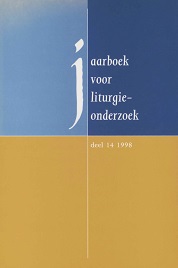Van forme naar formulier. Het ontstaan en de ontwikkeling van het klassieke gereformeerde doopformulier in de Nederlandse Reformatie
Abstract
The author of this article rewrote a chapter of the unfinished thesis of his late father, F. de Jong. The subject of the article is the order of ministration of infant baptism in the reformed churches in the Netherlands, especially its origin and development during the Reformation period. The oldest Dutch order dates from 1554 and was used in the congregation of Dutch refugees in London. Though this order influenced later forms, the first order in which the classic form can be clearly recognised, was published by the Dutch minister P. Datheen in Heidelberg in 1563. Eleven years later it was considerably shortened by the (provincial) synod of Dordrecht, which for the sake of liturgical unity also prescribed its use. In the next decades many revised editions were published. Some of the revisions seem to be arbitrary. Accurate comparisons of several more important editions show us, however, that the publishers were very much aware of the choices they made. They always worked up older text editions. Successive synods failed to establish the exact text for the form and/or its spreading. Again, at the turn of this century there were vehement arguments between denominations and scientists about the most correct and according to ecclesiastical law most reliable reformed order of baptism. Study of the relevant facts now reveals, that no synod sanctioned the whole classical form of baptism we now know. Ministers and congregations followed no more than standard practice when they considered this form, which was first published in 1639, official.


